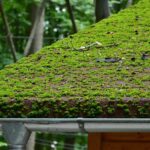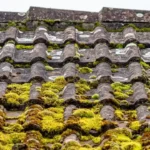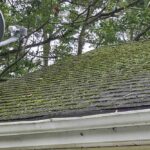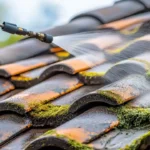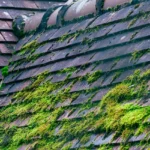Proper roof drainage is essential for maintaining the integrity of your home. Without effective drainage, water can accumulate, leading to leaks, mold, and structural damage. As a homeowner, understanding how to manage and maintain your roof’s drainage system is crucial. In this guide, we’ll explore roof drainage tips for homeowners to help you protect your home from water damage.

Understanding Roof Drainage Systems
A roof drainage system is designed to channel rainwater and meltwater away from your home. This system typically includes gutters, downspouts, and drains that work together to prevent water from pooling on your roof or around your foundation.
The Importance of Gutters
Gutters are a vital component of your roof drainage system. They collect water from the roof and direct it away from the house. Regular maintenance, such as cleaning your gutters, is essential to prevent blockages that can cause water to overflow and damage your home. For tips on gutter maintenance, you can visit downspout repair.
Downspout Efficiency
Downspouts are responsible for directing water from the gutters to the ground. Ensuring that your downspouts are free of debris and properly connected is vital for effective drainage. Learn more about maintaining downspouts at roof inspection checklist.
Common Roof Drainage Issues and Solutions
Clogged Gutters
Clogged gutters are one of the most common drainage problems. Leaves, twigs, and other debris can block water flow, leading to overflow and potential damage. Regular cleaning and installing gutter guards can prevent these issues.
Poor Slope and Drainage
If your roof doesn’t have an adequate slope, water might not drain properly. This can result in standing water, which can damage your roof. Consult a professional to assess and correct any slope issues.
Inadequate Downspout Length
Downspouts should extend far enough from the foundation to prevent water from seeping into your basement. If they are too short, consider adding extensions.
Maintaining Your Roof Drainage System
Regular Inspections
Regularly inspect your roof drainage system for signs of wear and tear. Look for loose or damaged gutters and downspouts, and repair them promptly. You can find more inspection tips at roof inspection checklist.
Seasonal Maintenance
Check your roof drainage system at the start of each season. Remove any debris and ensure that all components are functional. This proactive approach can prevent costly repairs.
Advanced Roof Drainage Solutions
Installing a French Drain
A French drain is a great solution for managing water around your foundation. It directs water away from your home, preventing basement flooding and foundation damage. For more advanced solutions, visit roof drainage system.
Rain Barrels
Consider installing rain barrels to collect rainwater from your roof. This eco-friendly option not only helps with drainage but also provides water for gardening and other outdoor uses.
Sump Pumps
If your home is prone to flooding, consider installing a sump pump. It can effectively manage excess water and protect your basement from damage.
Conclusion
Maintaining your roof drainage system is crucial for protecting your home from water damage. By following these roof drainage tips for homeowners, you can ensure that your home remains safe and dry. Regular maintenance, inspections, and implementing advanced solutions can go a long way in preserving your home’s structural integrity.

FAQs
What are the signs of poor roof drainage?
Signs of poor roof drainage include water stains on walls, mold growth, and puddles near your home’s foundation.
How often should I clean my gutters?
It’s recommended to clean your gutters at least twice a year, in the spring and fall, to prevent blockages.
Can I install a roof drainage system myself?
While some homeowners choose to install their own systems, it’s often best to hire a professional to ensure proper installation and functionality.
This article contains affiliate links. We may earn a commission at no extra cost to you.




